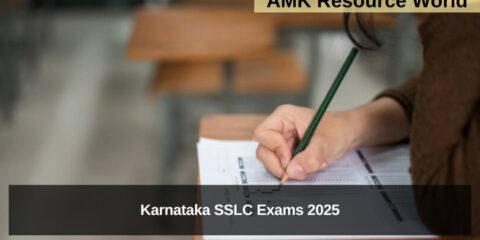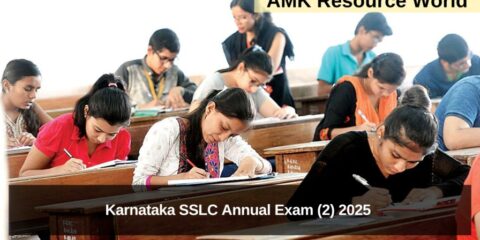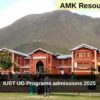| POLITICAL SCIENCE |
THE PROBLEMS OF INDIA & THEIR SOLUTIONS
Since Independence India is facing lots of Internal and External Problems, they need to be managed through efficient administration and continuous support of Citizens at Local, State and Central Level.

UNEMPLOYMENT

It is a situation where a person does not find work in accordance to his capacity or qualification, As per Census 2011 the poverty rate is 21.9%.
REASONS
Population Explosion
Improved technology
Shortage of Natural resources
Over dependency of Agriculture
Ruined cottage industries
Lack of Skill
STEPS TO OVERCOME
Improve the skill levels of Job aspirants
Providing Loans and Subsidy for Self Employment
Inculcate world class skill to compete with Global market
Provide Job Oriented Courses
CORRUPTION

It is offering bribe and following any other illegal means to achieve some illegal benefits, has spread to all strata of the society, as misuse of public authority for personal gains, It has now become the contagious disease in personal life, bribery, nepotism, caste favouritism, tax evasion, illegal hoarding, smuggling, economic offences, cheating, violation of international exchange, employment cheating and intentional slowdown of the work are the various forms of Corruption
EFFECTS
It builds negativity in personal and professional life
It damages the economic, social and political life of a country
It leads to crime
It nourish misadministration in Officials Working in Public Sector
The natural human tendency for selfishness, eagerness to fend of personal emergencies and personal gain
Lack of strict supervision and weak legal enforcement
STEPS TO OVERCOME
It can be rooted out only through strong public ethics and morality and personal commitment
Political will and public support is required for tackling
It require ethical political leadership, good officers and politically aware and educated public to eradicate it
Institutions in Karnataka like Lokapal and Lokayuktha are set up to fight corruption
By installing CC TV cameras in Government offices
Increasing efficiency of Government work
Awarding harsh punishment for corrupt officials
Increasing the number of courts and judges to deal with corrupt officials
DISCRIMINATION

Discrimination on the basis of gender, caste and region is more evident in country since Indian society is made up of patriarchal values, where the role of women and man are discriminated according to the patriarchal values.
Caste system is a gift to Indian political system from the ancient societal system based on Varna,
Regional inequality is like gender and caste inequality, Some regions of the country have achieved a lot of progress while many parts have remained backward, Some regions of the country have achieved a lot of progress while many parts have remained backward, It has grown to such an extent that many are demanding independent state status for themselves
to address the regional imbalances in Karnataka, a committee headed by D.M. Nanjundappa has given special report on various measures needed to solve the regional imbalance in 2002, as per which most backward regions of Karnataka have been accorded special status by adding Article 371(J).
MEASURES TO OVERCOME
Providing reservation in Education and Employment to overcome gender discrimination
Providing reservations in elections of local bodies to overcome gender discrimination (50% reserved for Women in Karnataka)
The right for equality and freedom have been included in the Part-III of the Indian Constitution to overcome caste discrimination
To eradicate caste system the Society has to change and accept it
To remove region discrimination the article 371 has been amended from A to J, to give special status to backward regions
COMMUNALISM

It is Segregation in the name of religion and creating hatred and cultivating opposite self interests, Political competition, social groupism and economic hatred is expressed in Communalism
EFFECTS
It creates social differences
It develops mutual suspicion and fear situation in the society.
It may damage the integrity and unity of India
It destroys the public and private property
It leads to mutual accusations
It causes physical assaults and other undesirable effects.
It puts self interest ahead of national interest
It disturbs internal peace and order of country
It will spoil the integrity, equality, fraternity and cultural diversity of country
MEASURES TO OVERCOME
Introduce uniform civil code
Bring equality among all the citizens
Supporting secular values in the society
Transcending narrow thoughts in favour of national interests
Foster the faiths of all people and develop healthy national thoughts
citizens should commit themselves for a secular society.
STATUS OF WOMEN

Jhansi Rani Lakshmibai, Kitturu Rani Chenamma, Aniebesant, Kasturba Gandhi, Savithribai Phule, Sarojini Naidu are some of the memorable women freedom fighters to fought bravely for the Independence of our country, Now women are seen in medical, teaching, engineering, pilot, astronaut, police, politics, military and other areas, many women like Indira Gandhi (Prime Minister) / Pratibha Patil (President of India) and other have performed successfully various roles as ambassadors, governors, ministers, chief ministers and many others influential positions
REASONS
Poverty
Social Customs like Child Marriages, Dowry & other
Illiteracy
MEASURES TO OVERCOME
To improve women’s education and status Government has started Women and Child Development Department
Curb child marriage system
Dowry prohibition act
Compulsory Education
Formation of self help groups
Women’s commissions have been established at national and state level
Reservations for women at state, national legislature bodies and Government Recruitment
Karnataka has implemented ‘Stree Shakti’ programme through which self help groups of women are formed and fostered as the means of social progress
TERRORISM

It is also called as extremism, a method putting pressure on a government, its bases on political ideologies, religious faiths and ideological beliefs creates a lot loss for the individuals as well as communities. Some of the terrorist anti national and anti social acts are Bringing down of world trade centre in USA, bomb attacks on Bali in Indonesia, bombing various cities in France, Britain, that are the reason for worries at international level, they targets civilians of the country, military bases, and also targets specific communities with specific languages, religion, race and skin colour to create maximum terror among them, They seek to spread their goals along with violence. To attain their targeted aims they also use tactics like suicide bombing, kidnapping innocent people
TERRORISM IN India
Terrorism is and was there in states like Nagaland, Manipur, Kashmir, Punjab and other places. There was attack on Taj Hotel in Mumbai on November 26, 2008, attack on Parliament, Our neighbouring countries like Pakistan and China are accused of supporting and aiding terrorism in our country, to terrorism India has lost lives of Gandhiji, Indira Gandhi and Rajiv Gandhi
EFFECTS
It creates a loss for the individuals as well as communities
It creates psychological pain and influences the cultural aspects negatively
It feeds on fear of the people.
MEASURES TO OVERCOME
The Special elite forces to tackle terrorists been created
CORPORATE STRATEGY
It is defined as a group administrative measure undertaken by a company to achieve a premeditated target, it’s the biggest challenge in front of Indian society since the beginning of 21st century, the main aim of it is to plan strategies that can maximising the profits of the company and influence the decisions of the governments
Through Corporate Social Responsibility (CSR) they can be employed to alleviate social problems like poverty, malnutrition, health, skill training and many other aspects of society
| GEOGRAPHY KEY POINTS |
INDIA – PHYSIOGRAPHY
On the basis of physiography India can be divided into four major divisions

NORTHERN MOUNTAINS
They consists of highest mountain ranges in the world
In India they extend for 2400 kms from the Indus gorge in the west to the Brahmaputra gorge in the east
There width varies from 240 to 320 kms
They are broader in the west and narrower in the east.
They cover an area of about 5 lakh km2
They consists of three parallel ranges

GREATER HIMALAYAS
They are the inner most, continuous and highest ranges
The average height of range located in it is 6100 mts
The highest peak in the world Mt. Everest (8848mts) is Located in it
They are called HIMADRI as throughout year they covered with snow
Gangotri and Yamunotri glaciers are situated in it
Passes like Burzil, Zoji-la, Shipki-la are located in it
The mountains lying to the north west of the Himadri are called Trans Himalayas.
The highest peak in the India Mt. Godwin Austen is Located in it
OTHER PEAKS LOCATED
| Mountain Peak | Height |
| Kanchenjunga | 8586 mts |
| Makalu | 8481 mts |
| Dhaulagiri | 8172 mts |
| Manaslu | 8156 mts |
LESSER HIMALAYAS
They are located to the south of the Greater Himalayas
They are also known as ‘Himachal
There ranges vary from 60 to 80 kms wide and 1500 to 4500 mts high
The Pir Panjal, the Dhaula Dhar, the Nagatiba, the Mussoorie, the Mahabharat and the Darjeeling ranges are located in it
They consist of Valleys like Kashmir valley, Kangra valley, Kulu valley
The famous hill stations, such as Shimla, Ranikhet, Mussorie, Nainital and Darjeeling are located in it.
SIWALIK HILLS

They are the outermost ranges or foothills located to the south of the main Himalayas.
They are also known as ‘Outer Himalaya’.
There ranges vary from 600 to 1500 mts wide and 15 to 150 Kms high
They extend from Jammu and Kashmir in the west to Arunachal Pradesh in the east
They have flat-bottom, longitudinal structure valleys, which are known as ‘Doons’
IMPORTANCE
They act as natural frontiers and prevent foreign invasion
They prevent the cold winds from central Asia
They obstruct the rain bearing winds and causes heavy rainfall.
Their slopes have thick forests and are ideal for plantation crops like Tea
THE NORTHERN GREAT PLAIN
They lie between the Himalayas and the peninsular plateau of India
They are formed by the depositional work of three river systems namely the Sutluj, the Ganga and the Brahmaputra
They are the largest alluvial soil tract in the world
There ranges vary from 240 to 340 kms in width and 2500 kms in Length
They covers an area of about 7 lakh sq kms
IMPORTANCE
They are suitable for irrigation and agriculture as it has pernnial rivers and vast fertile alluvial soil
They are useful for industrialization, urbanization and trade
Many Pilgrim centres are located in it
THE PENINSULAR PLATEAU
They are the largest physical divisions of India and consist of Oldest Landmass
They lie to the south of the Great Plains and occupies about 16 lakh sq.kms
They are bounded by many hills and plateaus namely the Aravalli, Vindhyas, Satpuras, Western Ghats, Eatern Ghats, Chotanagapur ranges, Deccan plateau, Malwa plateau
THE ARAVALLI RANGE
They are oldest fold mountain, they lies to the northwest
The highest peak Guru Shikhar (1772mts) is located on the Abu hills of the Aravalli range.
THE VINDHYAN RANGE
They form the the Northern edge of the Narmada Valley
The Satpura range runs in an east – west direction south of the Vindhyas, in between the Narmada and the Tapi rivers
WESTERN GHATS
They are the continuous range running parallel to the west coast of India from the Tapi valley to Kanyakumari
They are also known as the Sahyadri’s.
They are very steep on the western side and smooth on the eastern side.
They have important passes like Borghat, Talghat and Palghat
EASTERN GHATS
They run parallel to the east coast of India& extend from the Mahanadi Valley in the north, towards the Niligiri hills in the south where they join the Western Ghats
The highest peak located in the Eastern Ghats is ‘Armakonda’.
They are lower than the Western Ghats and are not continuous
DECCAN PLATEAU
They are bounded by Satpur and the Vindhyas in North West, Western Ghats in West, Eastern Ghats in East, Mahadev and Maikal ranges in North and Chotanagapur plateau in North East
IMPORTANCE
They are rich in Minerals & consist of thick forests
They are covered with black soil and useful for agriculture
They are the birth place of many south Indian rivers
They have hill stations like Ootty (Udagamandalam)
THE COASTAL PLAINS
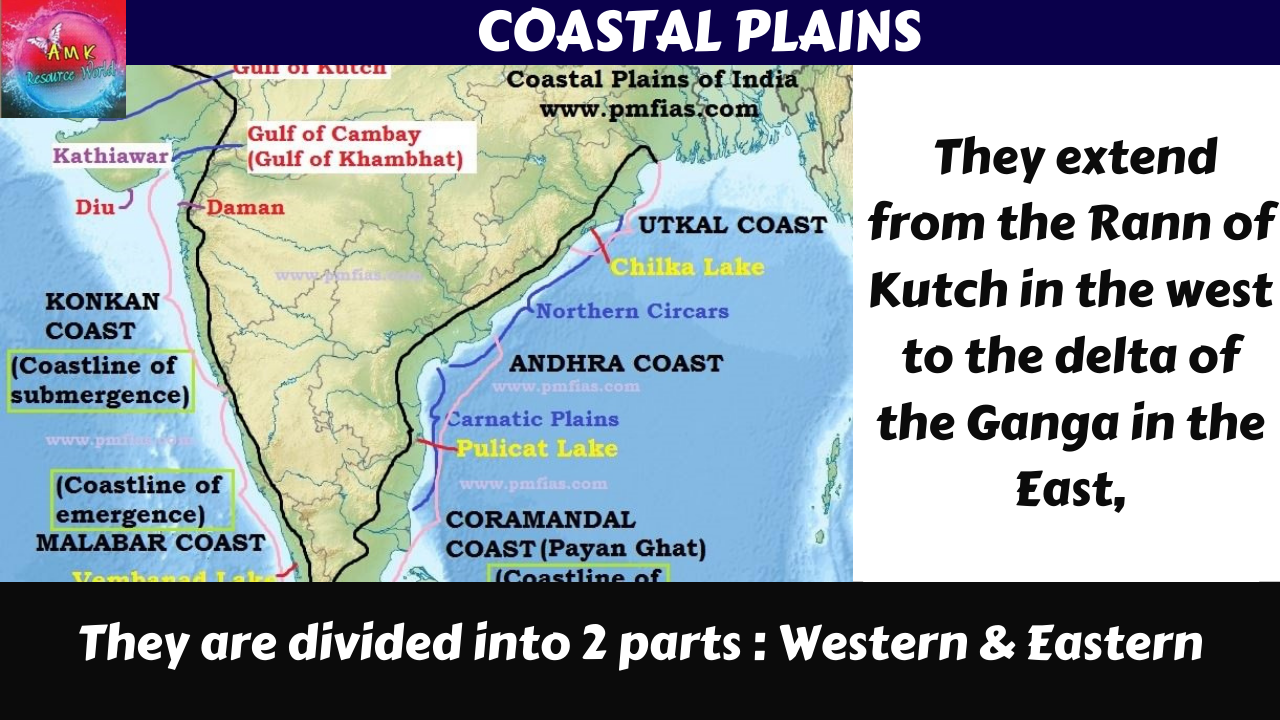
They extend from the Rann of Kutch in the west to the delta of the Ganga in the east, they are divided into 2 Parts Western Coastal Plain and Eastern Coastal Plain
WESTERN COASTAL PLAINS
They lie between the Western Ghats and the Arabian sea, They extend from the Rann of Kutch to Kanyakumari and divided into 3 regions
The Konkan coast which lies to the south of the Gujarat plain, extends from Daman to Goa
The Karnataka coast which extends from Goa to Mangaluru
The Malabar coast, which extends from Mangaluru to Kanyakumari.
EASTERN COASTAL PLAINS
They extend from the north of river Subarnarekha to Kanyakumari.
They lie between the Eastern Ghats and the Bay of Bengal
The eastern coastal plain is divided into two Parts the Northern Circar which lies to the north of river Krishna and the southern part which is called Coromandal coast
IMPORTANCE
They consist of Natural harbours like Mumbai, Marmagoa, Kochi, Vishakhpatnam, Kolkata that help to carry foreign trade
They are useful for fishing, shipbuilding, agriculture and production of salt.
They have beaches that attract tourists and backwaters are useful for navigation
ISLANDS
India has about 247 Islands, out of it 204 are Located in the Bay of Bengal and 43 in the Arabian sea
The Andaman and Nicobar islands are located in the Bay of Bengal
The Lakshadweep islands formed by Corals are located in the Arabian sea
| HISTORY KEY POINTS |
THE EXTENSION OF THE BRITISH RULE
Through Battle of Plassey and Buxar British gained full control over Bengal, most of eastern part was under control of British by 1765, now they wanted to hold supremacy towards Southern and Northern region because they were dominant part of India, Hyder Ali and Tippu Sultan of Mysore along with Peshwas of Marathas were the only impediments in the path of expansion for the British, to expand their empire they fought three Anglo-Maratha wars, four Anglo-Mysore wars and two Anglo-Sikh wars.
First Anglo Maratha War
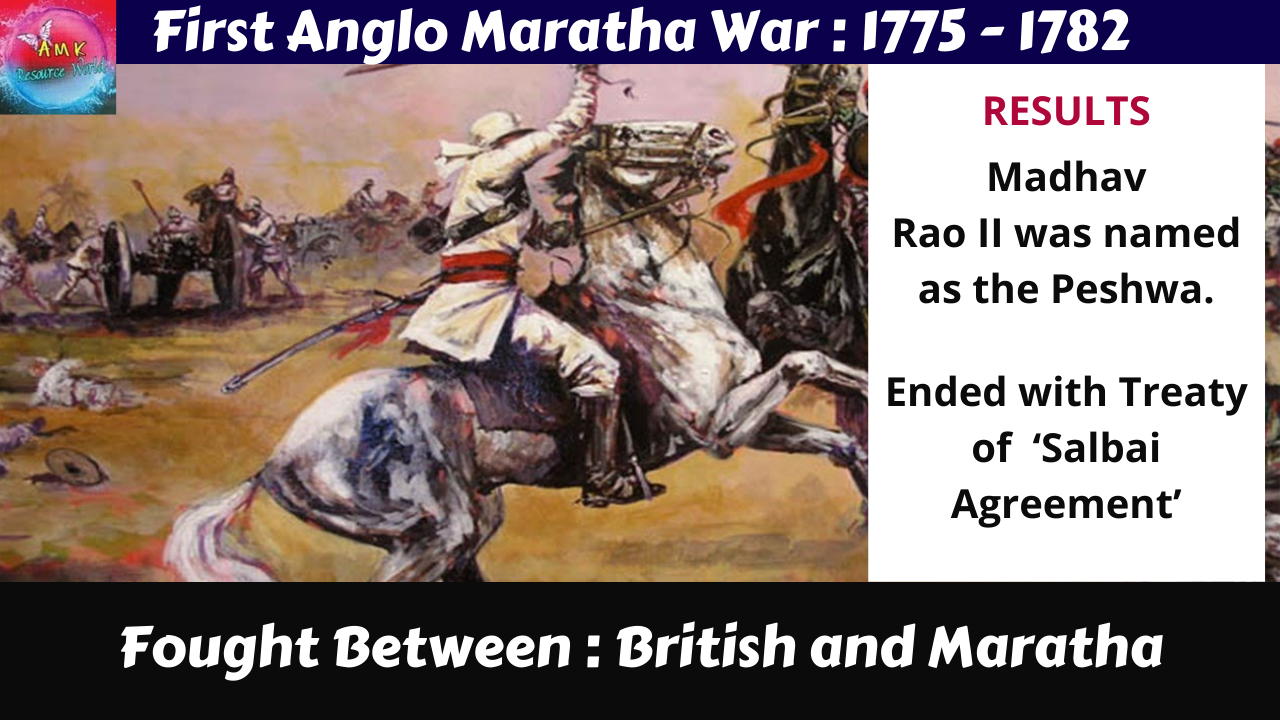
Consequences of War
Shah Alam-II was got back to the throne of Mughal Empire in Delhi by Marathas
After defeat to British in Battle of Buxar Shah Alam II was under control of British
Shah Alam II gave Kora and Allahabad to Marathas which were given earlier to British
After death of Madhav Rao Peshwa his younger brother Narayanrao came to power, he was murdered by his uncle Raghobha (Ragunatha Rao) that led to infighting
Maratha federation brought Madhav Rao II the minor son of Narayana Rao to the post of Peshwa
Raghobha (Ragunatha Rao) approached British for support
The war broke out beetween Marathas and the British, in which Allahabad was lost to British
War got ended with treaty of Salbai Agreement and Madhav Rao II was named as the Peshwa.
Second Anglo Maratha War

Consequences of War
The major reason for the war was differences among the Maratha Chieftains
There was enmity between Yeshwanth Rao of Holkar family and Daulth Rao of Sindhia family to establish control over Peshwa Balaji Rao II
In 1802, the army of Holkar defeated the armies of Scindia and the Peshwa
Peshwa took help of British, they entered theSubsidiary Alliance system by accepting the Treaty of Bassein
Maratha families like Holkar, Gwalior and Bhonsle formed an alliance and opposed the Treaty of Bassein
Lord Wellesley defeated the armies of various Maratha families
Lord Wellesley was criticised for his policy and he returned back, that led to end of war
Third Anglo Maratha War
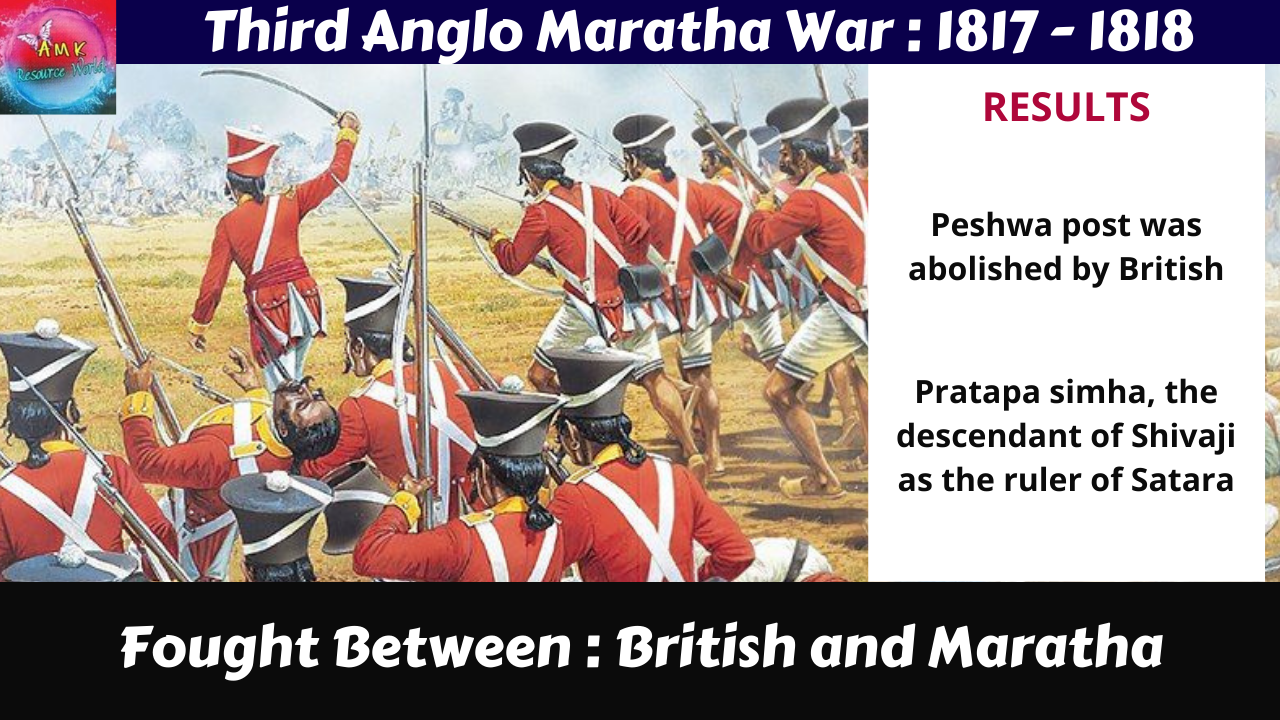
Consequences of War
The Peshwa attempted to free himself from the clutches of the British
Peshwa attacked the British Residency in Poona and brunt it down
Appa Saheb of Nagpur and Malhar Rao Holkar rebelled against the British and were supressed
Peshwa Baji Rao II fought against the British at Koregaon and Ashti and later surrendered to the British
British abolished the Peshwa post and granted a pension to Baji Rao II.
British named Pratapa simha, the descendant of Shivaji as the ruler of Satara and made him traditional ruler of Maratha
Anglo Sikh Wars
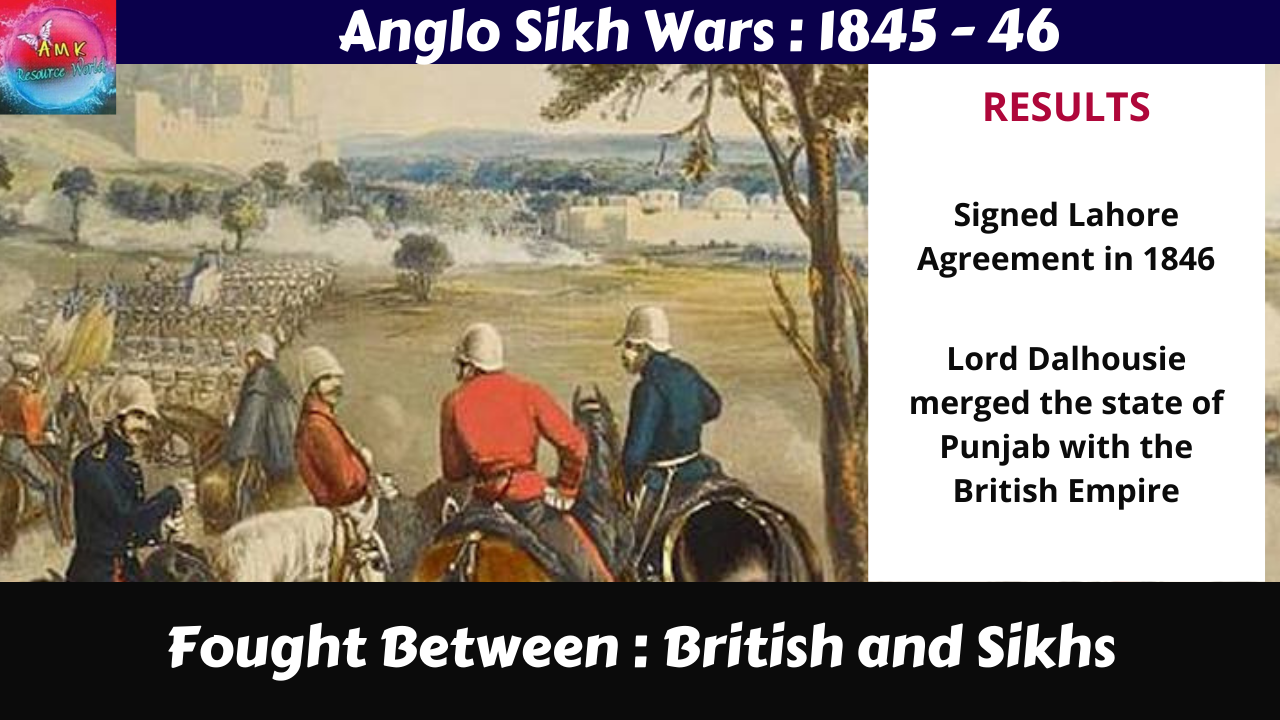
Consequences of War
After the death of King Ranjith Singh in 1839 a political anarchy broke out in Punjab
The British by violating the Treaty of friendship attempted to invade Punjab
In a war between British and sikhs, sensing danger Hindus, Sikhs and Muslims got together to defeat the British.
Due to few traitor leaders they got defeated by British and Signed an Lahore Agreement in 1846
Sikhs led by ‘Chattar Singh Attariwala’ in Lahore and ‘Moolraj’ in Multan opposed the attempts by the British to rule Punjab directly
Again the Sikhs were defeated and Lord Dalhousie merged the state of Punjab with the British Empire
Subsidiary Alliance (1798)
To expand the British Empire in India Lord Wellesley followed three policies : Subsidiary Alliance, Waging war against new states and administering the states directly that were under the control of the British, Hyderabad was the first state to enter Subsidiary Alliance agreement
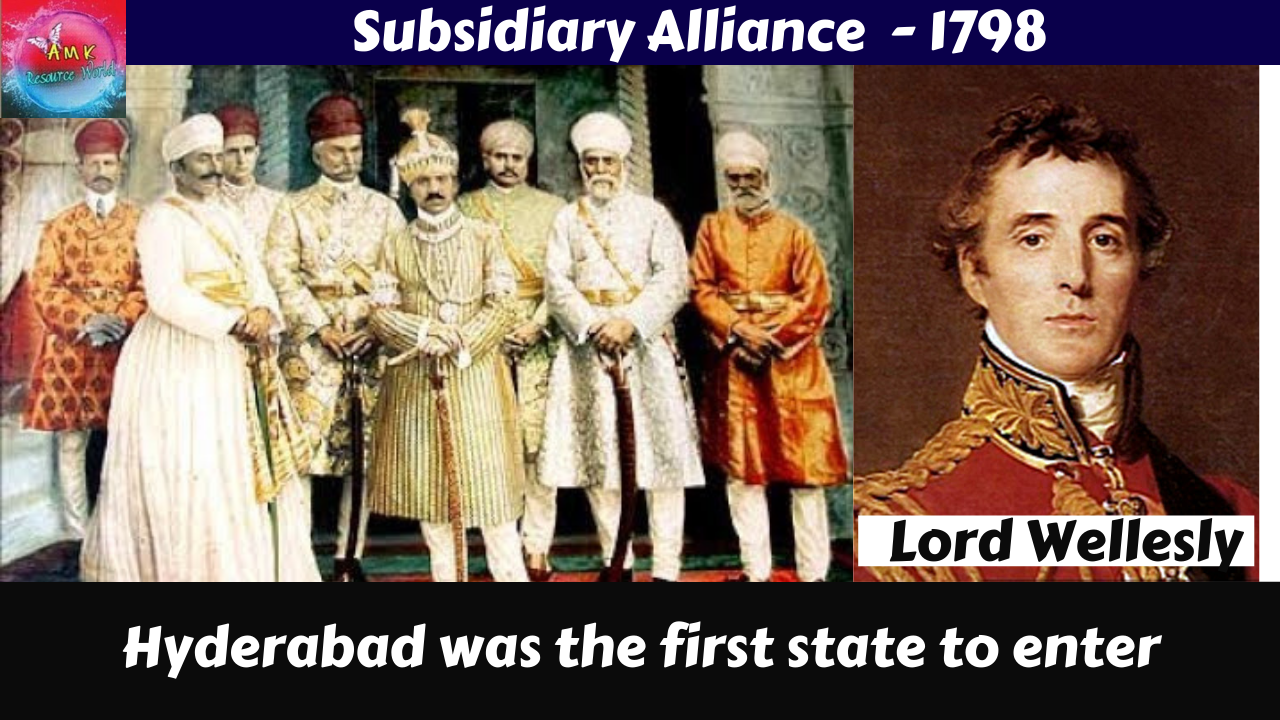
Conditions
British Army to be kept in Kingdom of Indian King
The Kingdom had to bear the expenses of the army and the wages of soldiers, and also need to give certain revenue lands
British Resident should be allowed in court of King
Without permission of British the King should not appoint any other European
The permission of the Governor General was mandatory is to enter into any agreement or pact with any Indian state
In the return the Company would offer protection to the state from any internal or external aggression
Doctrine of Lapse
In 1848 the Governor General Dalhousie made an attempt to integrate Indian princely states with the British Empire through his Doctrine of Lapse policy, he used this policy as an Political weapon, Many kings rebelled against it and finally led to Sepoy Mutiny of 1857

Conditions
“If any Indian ruler died childless, his adopted children had no legal right over the throne”, Such state merged with the British Empire
Princely states like, Satara, Nagpur, Sambalpur, Udaipur, Jhansi, Jaitpur came under this policy


